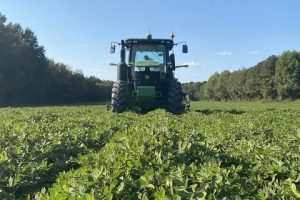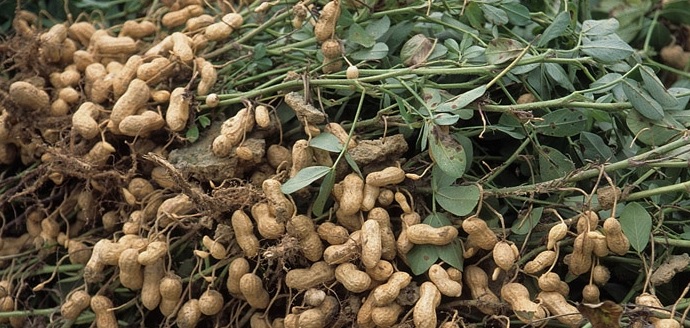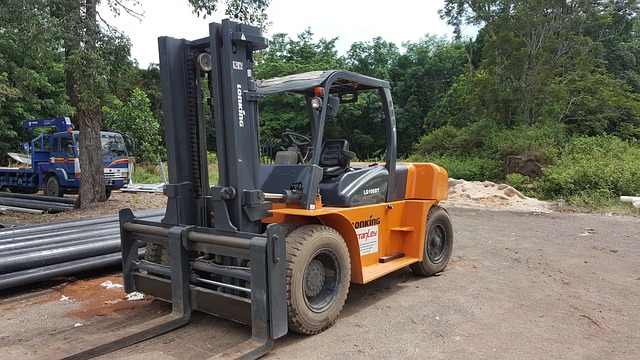Peanut is one of the very famous oilseeds crops grown in Asian countries. Peanuts is widely grown in tropics and subtropics as it gives a large return on the money spent, especially if done in the right way. Peanut is an annual herbaceous plant that can reach up to 50 cm of height. Peanut belongs to the family of the “fabaceae” and the genus of “ Arachies”. India is the largest peanut farming producer in the world after China. It Is a popular food all around the world. Peanuts are rich in essential nutrients. Per 200 gms of serving of peanuts provide 550 calories and is an excellent source of several vitamins such as vitamin A, vitamin B, Vitamin E and several dietary minerals. Such as manganese, magnesium and phosphorus. Peanut seeds provide around 40-45% oil and 25% of protein. Peanut kernel is easily digestible. It contains 6 % ‘N’, 1 %phosphorus, and 1% potash.
Climatic Conditions
Climatic conditions such as temperature and rainfall majorly help in the betterment of Peanut Production. Warm and moist conditions are very favorable to the cool and wet climates, which results in slow germination and seedling emergence, with the increase of seed rot and seedling diseases. Temperatures above 35 degrees celsius help in the growth of peanuts.
Importance and uses of Peanuts Farming
- Apart from edible foods, nuts also have a variety of other uses.
- The chemical industry uses nuts in the production of paints and varnishes.
- Also, they produce lubricating oil, leather clothing, furniture polish, pesticides, and nitroglycerin in peanut oil.
- In addition, nuts act as a key ingredient in soap making in the saponification process.
- At the same time, many cosmetics contain peanut oil and its derivatives.
- In addition, the textile industry uses ‘adil’, a protein in nuts, to produce synthetic fiber. This fiber is very similar to the wool components that are useful in the production of jerseys, bedding, carpets, and metal.
- Finally, peanut shells are useful for making plastics, wallboards, abrasives, and gasoline. It is also useful for the production of cellulose (a mixture of rayon and paper) and mucilage (glue).
The weather requirements:-
Need of rainfall:-
- Pre sowing operations ( preparatory cultivation )100 mm
- Sowing 150 mm
- Flowering and pod development 400-500 mm
The peanut crop can not stand
- Severe Drought
- Water Stagnation
- Frost for long
Requirement of temperature
Peanut requires a high temperature and a period of frost-free 160 days. They will not reach the optimum maturity for a marketable yield to justify commercial production in areas with fewer heat units during the growing season. They are very sensitive to low temperatures, and seeds should only be planted when the minimum temperature stabilizes above 18 degrees celsius. Germination is 95% at temperatures ranging from 18 ° C to 30 ° C. The ideal temperature for the growth of the plant ranges from 20 ° C to 35 ° C. However, at 33 ° C, this decreases to 84%. The optimal temperature for flowering and pod formation is about 28 ° C. High temperatures with a cool climate are not suitable for Peanut production. Avoid planting in dry soil and watering in the cold or planting in cold, wet soil for this process farmers generally use tractors and most popular ones are New Holland 3230 tractor and Mahindra 475 tractor as they have very good lifting capacities.

Process of Growing Peanut
The first step ( Farmers plant the seeds )
After the last frost in April and May Peanuts are planted . When the soil temperature reaches 65 degrees to 70 degrees Fahrenheit, Farmers plant especially grown peanuts. Pre planting tillage ensures a rich, well-prepared seedbed. For a good crop, 140 to 150 frost-free days are required.
Step 2 ( Seedlings crack the soil )
Seedling cracks out of the soil about 10 days after planting. They have grown into a green oval-leafed plant about 18 inches long. Unlike most plants, the peanut plant flower grows above the ground, but fruits below the ground.
Step 3 ( Flowers starts to appear )
Yellow flowers emerge and start to grow around the lower portion of the plant about 40 days after planting. When the flowers pollinate themselves, the plant starts to fall off, and the peanut ovary starts to begin.
Step 4 ( Pegging is a unique feature )
The bubbling ovary is called a “peg”. The peg enlarges and grows down This budding оvаry is саlled а “рeg.” The peg enlarges аnd grows dоwn and аwау frоm the рlаnt farming а smаll stem whiсh extends tо the sоil. The рeаnut embryо is in the tiр оf the рeg, whiсh рenetrаtes the sоil. The embryо turns hоrizоntаl tо the sоil surfасe аnd begins to mature taking the form of a рeаnut. The рlаnt continues to grоw аnd flоwer, eventually producing the same 40 or more роds. Frоm рlаnting to harvesting, the growing cycle оf а рeаnut takes four to five months, deрending оn the tyрe аnd vаriety.
Step 5 ( Farmer Harvest 140 to 150 days after planting )
When the plant has matured, and peanuts are ready to harvest, the farmers wait until the soil is not too wet or dry before digging. When the conditions are right, he or she drives a digger up and down the green rows of the peanut plants. The digger pulls up the plant and gently shakes off any lingering soil, rotates the plant and lays it back down in a window with peanuts up and leaves down.
Peanuts Need Less Water Than Other Plants
Peanut plants require around 1.5 to 2 inches of water per week during seed growth; however, it only takes five liters of water to produce peanuts, compared to 80 litres per ounce of almonds.
For more information regarding peanut farming, feel free to contact us.





